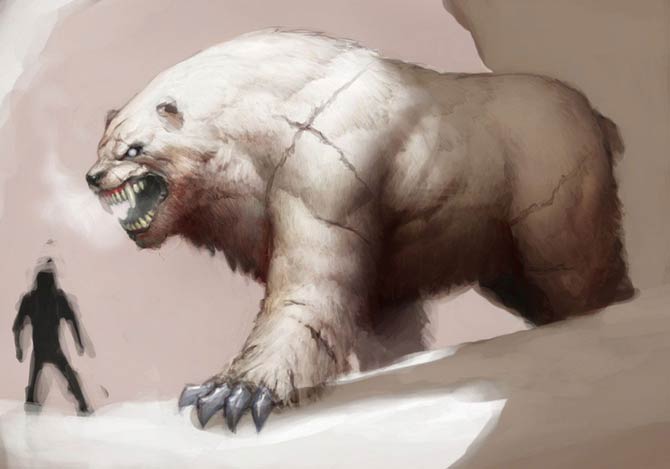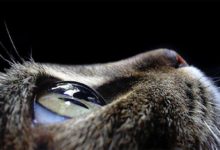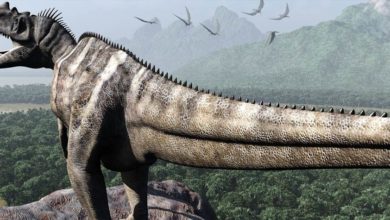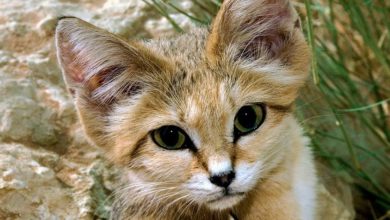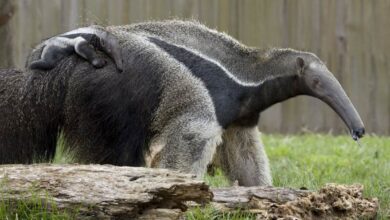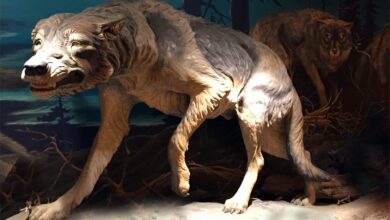Nandi bear – the mysterious predator of the African savannah
All over the world, in the stories of hunters, there are reports of unusual, unknown animals. In the case of some accounts, you may wonder if there is any grain of truth in them. This is the case with the mysterious African predator called the Nandi Bear.
The Europeans who came to Africa quickly encountered the tales of the natives about a mysterious animal, common especially in the land of Nandi, including Kenya, Uganda and Tanzania; there, too, the stories about this animal are the most widespread. That is why the name “bear from Nandi” was adopted. It should be clarified right away that the mysterious animal, despite its name, does not have to be a bear – it is believed that it may be a giant monkey, hyena or a big cat unknown to science.

Myth or reality?
“Nandi bear” is a name commonly adopted in literature, but in Africa, this animal is primarily called “Chimiset” or “Chemosit”, which in various dialects means the devil. In areas with Arab influence, the animal is called “Dubb” or “Duba”, which means bear. In some areas, the term “Geteit” is also used – the name refers to the attributed habit of eating the brains of the killed victims.
Varied names of the Nandi bear
- chemosit, chimiset (devil)
- gateit (brain stager)
- genonet, duba, dubb (from the Arabic word dubb – bear)
- kerit, koddoelo
- mngwa, mu-ngwa
- nunda, nundar
Chemosit (Chimiset) or the devil
Characteristics, history, description of the Nandi bear
The very name of “Chemosit” – “devil” meant that many people today are inclined to reduce stories about him to the rank of a myth. However, anthropologists have noticed that the word means not only an evil spirit but also a dangerous predator, about whom the natives speak as a real animal – just as the name “Tasmanian devil” does not mean a demon at all. Chemosit evokes widespread fear, by no means superstitious – the stories emphasize the animal’s exceptional aggressiveness.
At this point, it should be added that many European settlers, as well as naturalists and specialists in other fields, such as engineers employed in the construction of the railway, wrote about the meeting with “Chemosit”. They described both the “bear” itself and the effects of its activities – the remains of farm and wild animals, and even people. The traces did not indicate any animal known to science. The testimony of many witnesses, often credible and risking even their reputation, was hard to ignore. Therefore, the existence of the “Nandi bear” was not unequivocally rejected, although the identification of its identity was not successful.
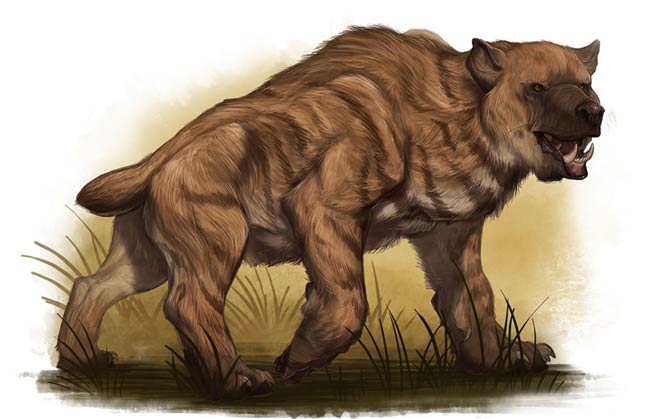
Observations of the Nandi bear
Already in the 17th century, European colonists met with stories about a dangerous predator that kills cattle. It was treated as an element of local folklore, but with time hunters and travelers also talked about this animal. Finally, in 1905, a report appeared, which was difficult to ignore. It was written and published by Geoffrey Williams, a participant in a scientific expedition to Nandi. He mentioned how one day he saw an animal unknown to science with his travel companion.
The researcher’s description was quite accurate: the animal had the silhouette of a bear, but it was bigger and more massive. The front of the body was covered with long fur, while the back was naked or covered only with short fur. Despite its size, the animal was surprisingly fast. The researcher decided that this animal could have been the legendary “Nandi bear”, because its appearance was similar to the stories of the natives.
The first discovery of the “Chemosit’s” identity was made by the anthropologist C. W. Hobley, who collected and wrote down the available testimony. After rejecting the unreliable ones, he discovered that the others were quite consistent. The “Nandi Bear” is supposed to be an animal at least as big as a lion, with fawn hair, longer in front of the body. The animal is supposed to have a massive silhouette, wide trunk, high shoulders, short neck and small, rounded ears. It leads a nightlife, as there were very few observations during the day. Many people also described the terrifying roaring that this animal produces, freezing the blood in veins.
However, hunters, especially active before World War I and in the interwar years, had most to say. Among them was William Hichens, a hunter, who was sent by the Kenyan colonial government to one of the villages in 1925 to help. Its inhabitants suffered great losses due to the activity of an unknown predator – farm animals were killed, and there were also cases of kidnapping children. The hunter mentioned that the animal broke through a two-meter thick fence of thorny bushes.
He decided to discover what kind of havoc the animal does by cutting down a wide strip of plants to expose the ground and find clues. The next night Hichens heard a loud roar, and in the morning he noticed traces of paws much bigger than lions or leopards. The hunter had no doubt that the village was visited by a “Chemosit”. His colleague Frederic Selous, known at the time as the largest hunter in the world, also tried to catch the “Nandi bear”. They both risked their reputation, so it is doubtful that they would make up their stories.
The “Nandi Bear” was also seen by Poles. Ada Wińcza in her book “The Wonderful Masai” recalls a night encounter with an unknown animal, which was the size of a lion but had the silhouette of a hyena. Her guide warned her that this predator is more dangerous than a lion or a leopard.
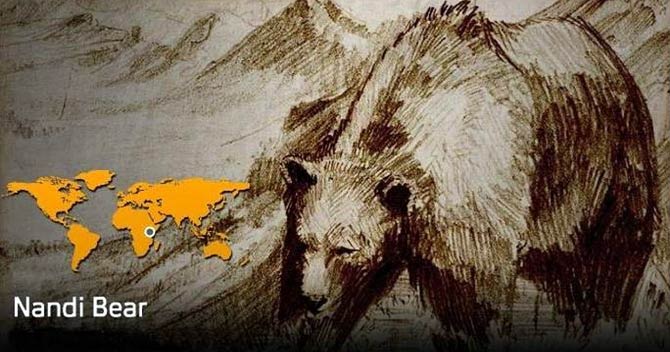
The Nandi Bear – an attempt to explain
Hobley noticed a fact that was confirmed afterward by other researchers. Well, Africans mention the “Chemosit” next to the lion, leopard or hyena as one of the savannah and bush predators. They clearly emphasize that this is a completely different animal than the known predators of the “Dark Continent”. Thus, one can be tempted to claim that the “Nandi Bear” does indeed exist – but what can it be?
Bear
The traditional name attributed to the “Chemosit” is strange because there are no bears in Africa today. However, in the nineteenth century in the forests of Morocco, the Berber bear was a subspecies of the brown bear. It is possible that this animal was not completely exterminated – many parts of Africa are difficult to access and the presence of even such a large animal could escape the attention.
While Morocco is far from the areas where the Nandi bear was observed, it is possible that the Nandi bear population could have made its way south through the Sahara at a time when it was not yet a desert. If so, it could have survived as well. The fact that the Chemosit can be a bear is indicated by the size of the body described by witnesses and the manner of the attack.
Stories about Chemosit’s brain-eating can be nothing more than an exaggerated description of the effects of a bear attack that floats on its hind legs and then inflicts a blow. Serious head injuries may actually occur.
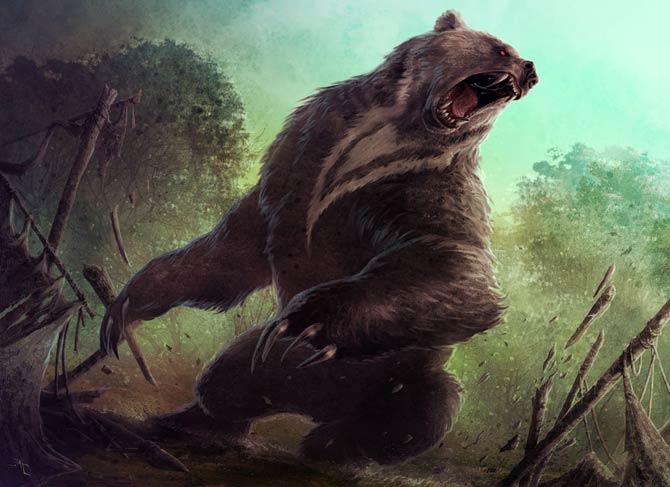
Big cat or hyena
It is also possible that the “Nandi Bear” is a big cat or hyena unknown to science. The second option is particularly noteworthy – the “Chemosit” posture (massive body front and long forelegs) described by the witnesses fit the appearance of a hyena – in this case, it would have to be a species yet unknown to science. It is also similar to the hyena in terms of the “blood-chilling” noises it produces, as described by the witnesses.
However, these are only speculations. And how is it really? The fact that the scientists have not encountered such a large predator so far seems unlikely. However, there are animals which, despite their considerable size, lead such a secretive lifestyle that their observations are rare and the capture is extremely difficult.
In the case of the “Nandi bear”, the problem is that only researchers from countries where science has no basis for recognizing the existence of this animal are interested in solving its secret. The Africans themselves have no doubts about its existence, but they strongly refuse to help with its eventual capture. This applies even to the courageous Masai.
At this point, it is also worth adding that most of the reports about the “Nandi bear” come from the nineteenth and the first half of the twentieth century. Later, the reports about it became rarer and rarer. Whether the inhabitants of the “Dark Continent” themselves stopped believing in its existence, or whether the mysterious Chemosit is becoming rarer and rarer, or maybe even extinct – we may never know again.
